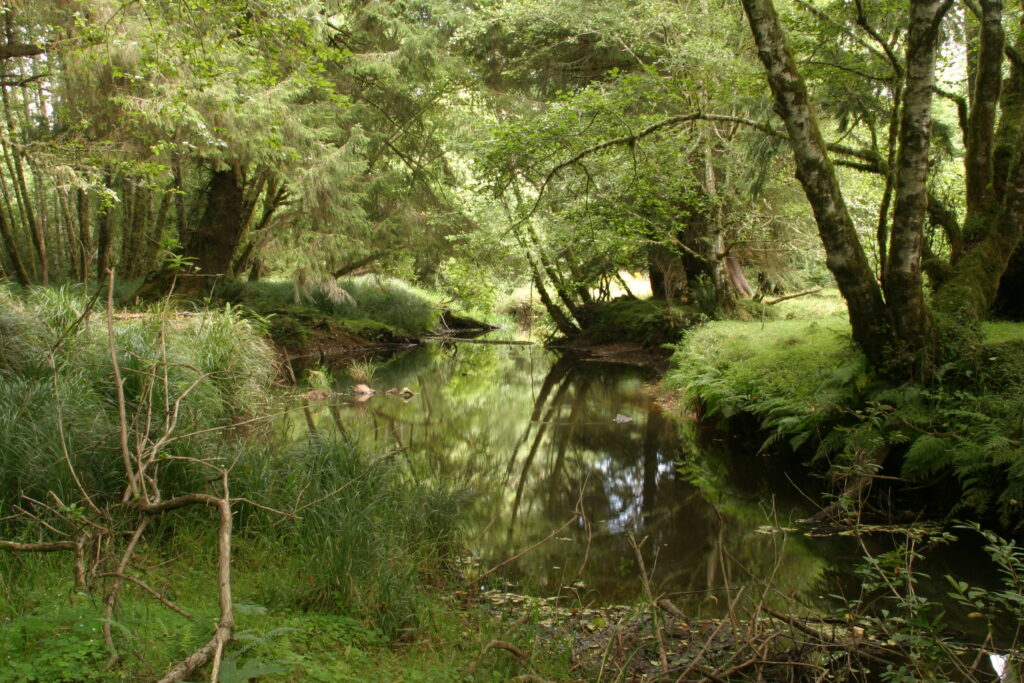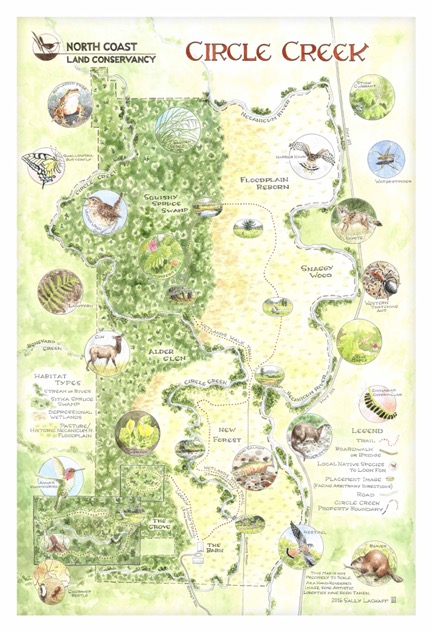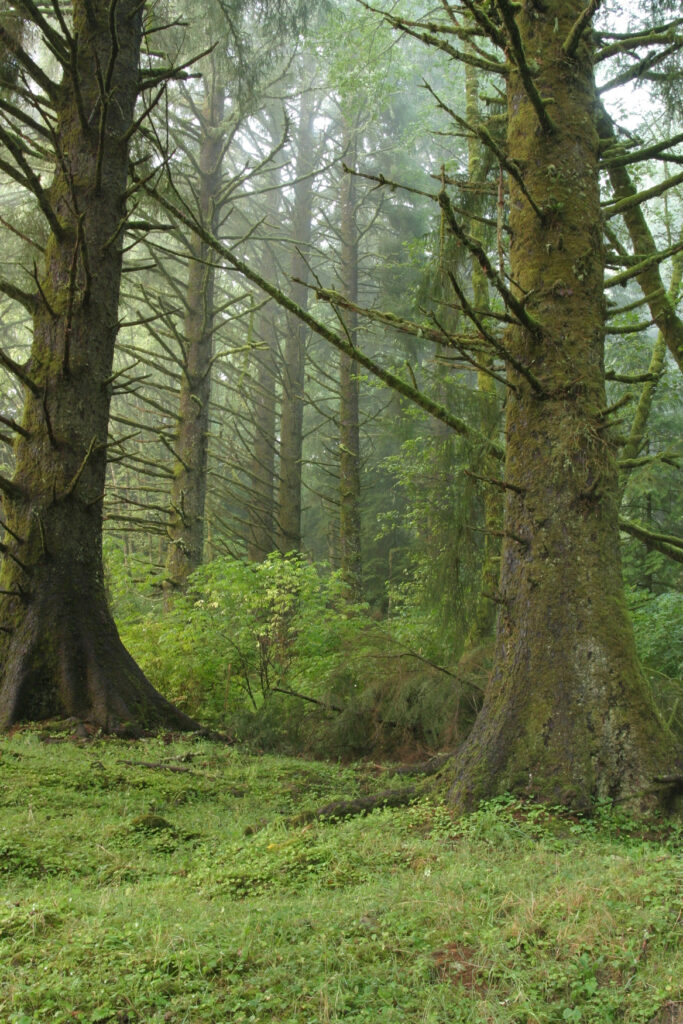Circle Creek Conservation Center
Information on Visiting Circle Creek:
Circle Creek Conservation Center is open from dawn to dusk every day, conditions permitting, unless otherwise posted.
Dogs are not allowed on the trails or anywhere on the property. There are no toilets.
Circle Creek Conservation Center welcomes visitors at the entrance to Circle Creek Habitat Reserve, one of our largest habitat reserves, along the west bank of the Necanicum River at the south end of Seaside, Oregon. It also serves as the gateway for a pair of nature trails showcasing the Sitka spruce wetlands and the recovering floodplain at the base of iconic Tillamook Head. Circle Creek is the most accessible of our more than 60 properties between the Columbia River and Lincoln County; most are not normally open to the public (Read why!).
We encourage you to walk the trails and keep a look out for the vast array of birds, salamanders, and other creatures who live on this reserve. While our conservation center is used for numerous community events and activities, it is also a working office for our staff and volunteers. We encourage you to call if you have a general inquiry or make an appointment if you’d like to speak with a specific staff member. Thank you for understanding!

Directions to Circle Creek
Circle Creek Conservation Center is at the end of Rippet Road in Seaside; look for it on the west side of US 101, 0.7 mile north of the junction with US 26. Follow the road west and north a short distance, passing a gravel quarry on your left, to where it ends at our conservation center.
Walking Trails
Start your trail walk at the conservation center. A large signboard at the entrance displays this illustrated map of the property and its trails, by Astoria artist Sally Lackaff, and the code of conduct (see below). Inside the barn are sign-in sheets required of everyone visiting the property.
Legacy Loop (Currently closed for maintenance)
0.8-mile loop
Follow the mowed path north through the recovering forest. Watch for a trail post on your left, marking the start of the Legacy Loop. The trail crosses a small creek and then splits; go either direction to explore the Sitka spruce forest at the base of Tillamook Head. Return as you came.
Wetlands Walk
2.4-mile loop
Follow an old farm road and wooden bridge across Circle Creek, then veer left on the mowed path that follows the creek’s curving route through the floodplain. After the trail drops nearly to creek level at the “avulsion point”—where the Necanicum River and Circle Creek converge during periods of high water–follow the mowed path to the left to reach the first of a series of long boardwalks. These boardwalks fill gaps in a berm built decades ago to control flooding; these gaps now allow water to flow freely across the floodplain. At the end of the last section of boardwalk, either return as you came or follow a mowed route east and south to return to the avulsion point and the barn.

Resources for Your Visit
Download a black-and-white trail map in English and Spanish
iNaturalist checklist of birds and other animal species observed at Circle Creek
Printable eBird field checklist for Circle Creek

Code of Conduct
This is a natural wildlife area; trails are rustic and minimally developed and will have natural hazards associated with them (high water, wild animals, uneven ground, swift rivers, etc.)
The wildlife habitat reserve is private property. You are welcome to hike here after signing the release form (found inside the north barn) absolving the owner of responsibility in case of accident with the understanding that you enter at your own risk. Entering the property without signing the release constitutes trespassing (and nobody wants that).
Please enjoy walking on this special property (no bikes, vehicles, horses, etc.)
There is a large herd of elk that frequents the property. For your safety and theirs, enjoy viewing them from a great distance.
Please follow a leave-no-trace ethic while experiencing this wild area (no pets, camping, fires, hunting, etc.)
Thank you to all our Circle Creek funding partners
Jane Barber, Mary Blake, Margery Bloomfield, Cornelius Branson, Anna Braun, Keith & Mary Chandler, Donald & Betty Church, Jean Danforth, Connor Darc, Michael Dooney, Dan & Nancy Eid, Patricia Friedland, Lynn Fulgham, Don Hawley, Jeanne & Randall Henderson, Harry Henke IV, Tom & Kirsten Horning, Lynne Johnson, Charlene Larsen, Jeanne Lucia, Stubby Lyons, Kathleen Malin, Lester & Margaret McNary, Jeanette O’Connor, Michael Owen, Ralston/Malone, Doug & Kirsten Ray, Beverly Rice, Judith Schwartz, Doris Snodgrass, Viviane Tallman, Ruth Taylor, Jim & Micki Towell, Steve Warner & Marilyn Blacketer, Daniel & Kay Wick, Steve & Kathy Wilson, Boone Construction, Kenneth Ulbricht Consulting PC, Oregon Hunters Association (Clatsop, Tillamook, Yamhill and Oregon State Chapters) OWEB, Rainland Fly Casters, Safari Club International, Seaside Heights Development LLC, Seaside International Hostel, Tradesmen Corporation, U.S. Fish & Wildlife Foundation, U.S. Fish & Wildlife Coastal Program.